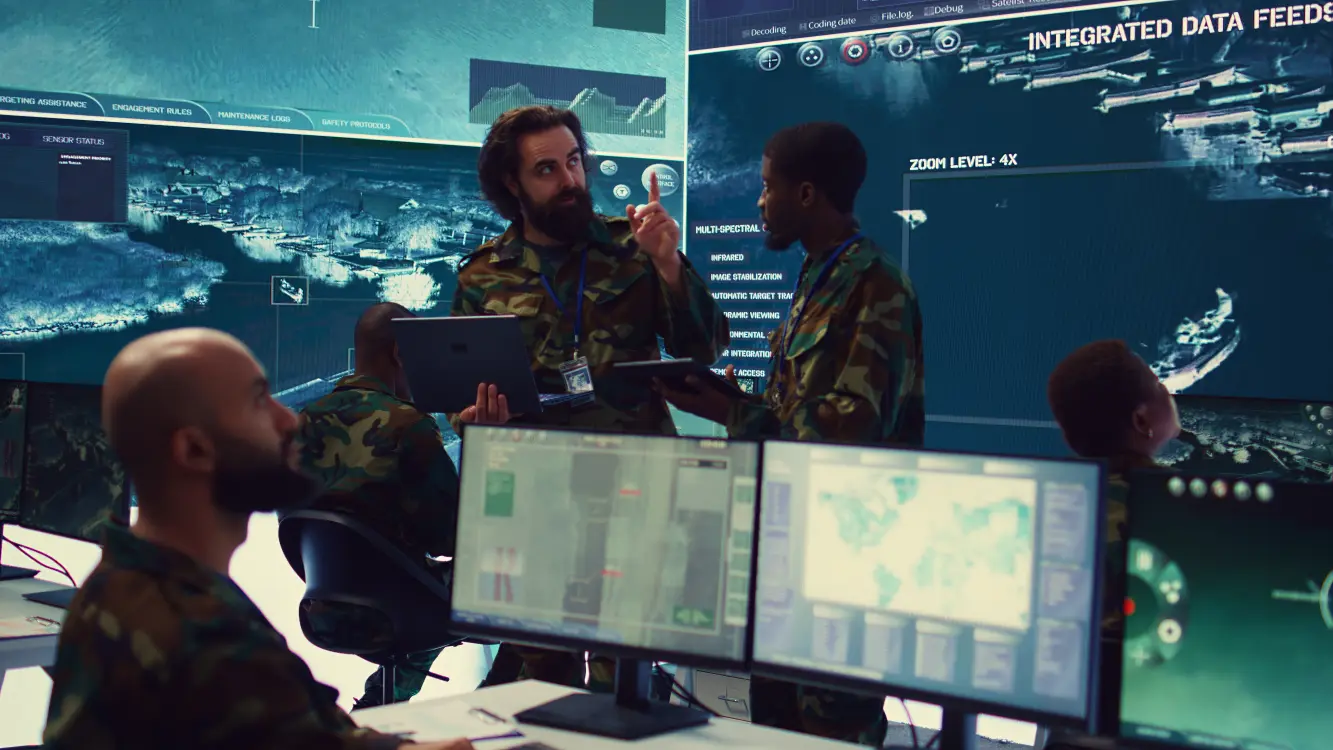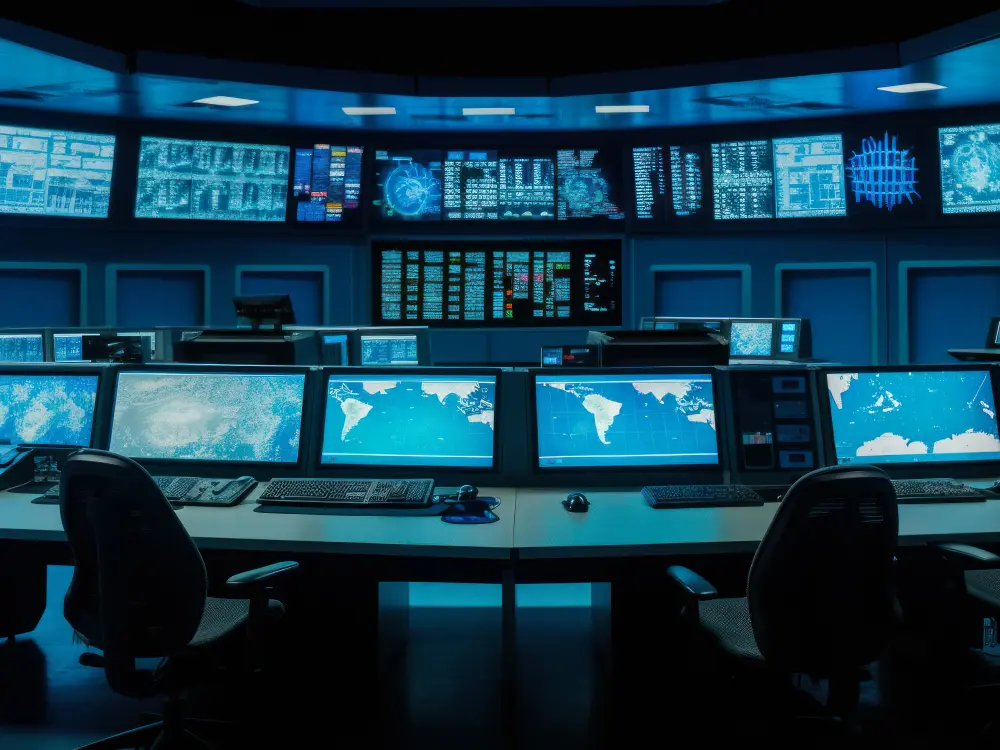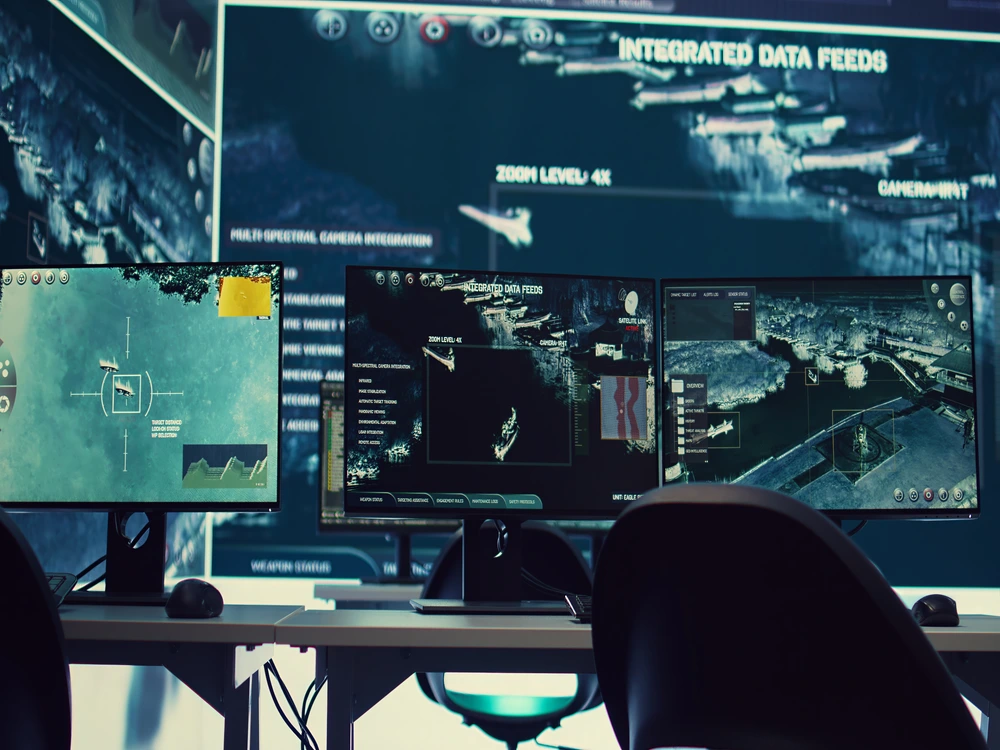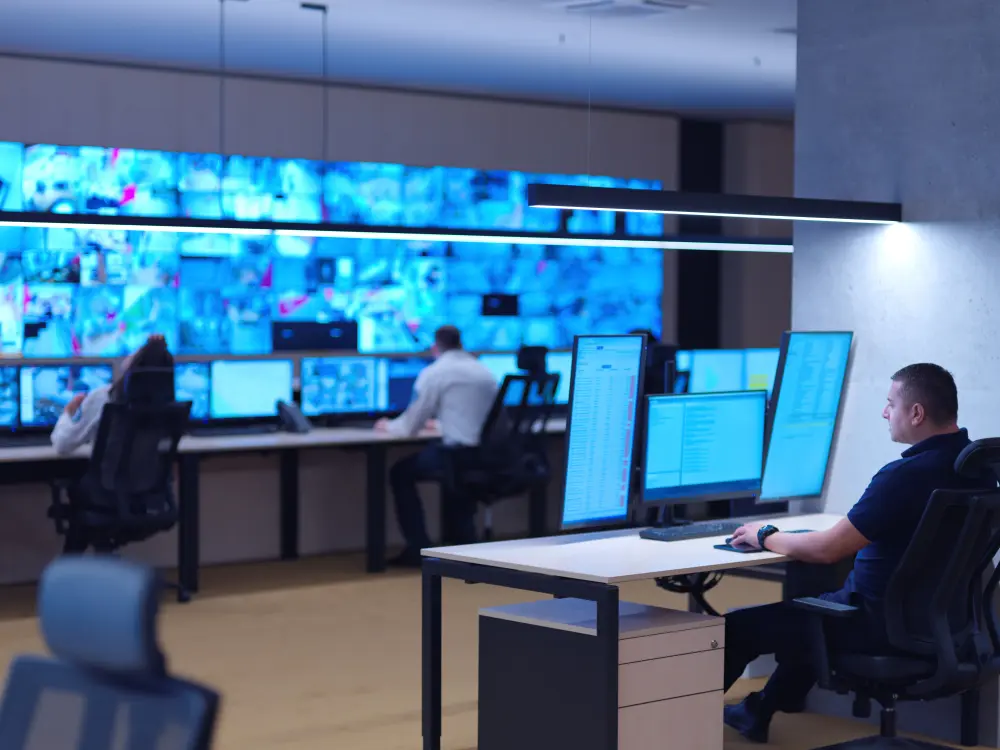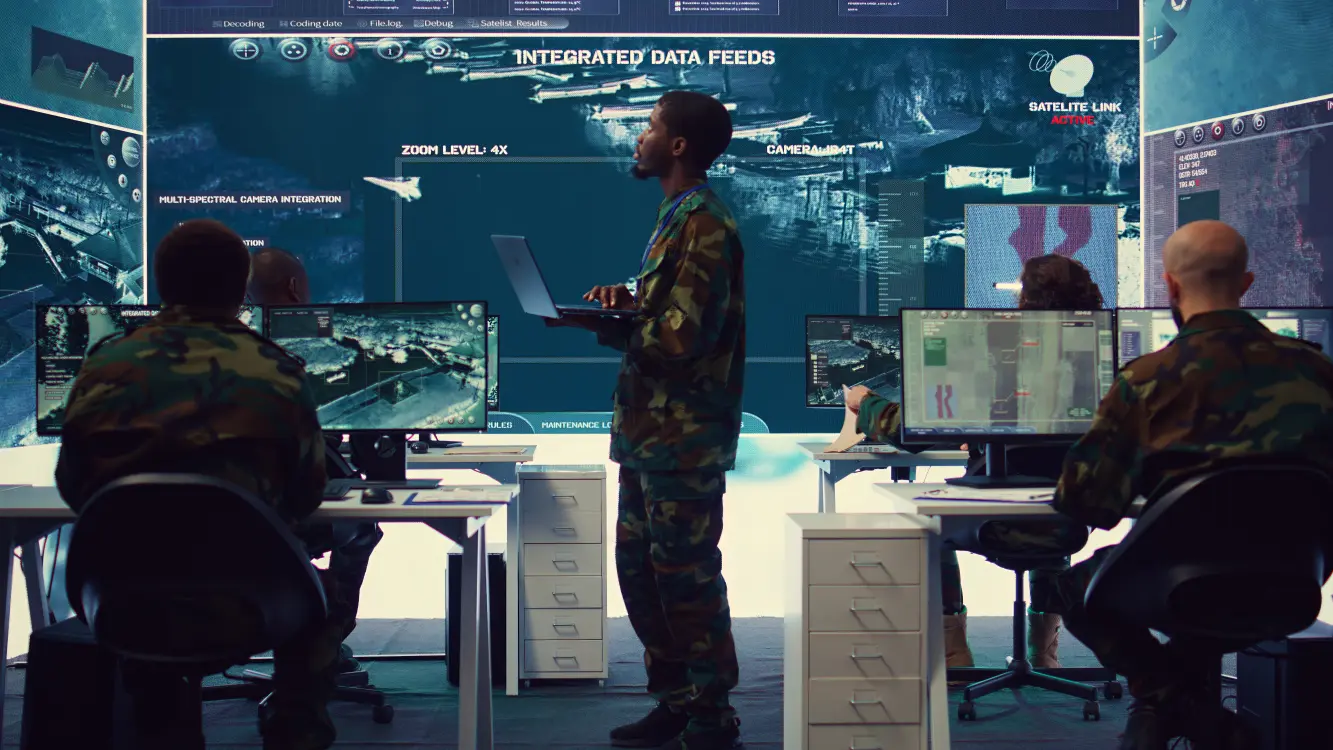A
command centers serves as the brain of an organization, providing real-time monitoring, decision-making, and
operational efficiency. Whether it’s for security, IT management, or corporate operations, an effective
command centers enhances control and coordination. In this guide, we’ll cover the key aspects of setting up a state-of-the-art
command center in 2025.
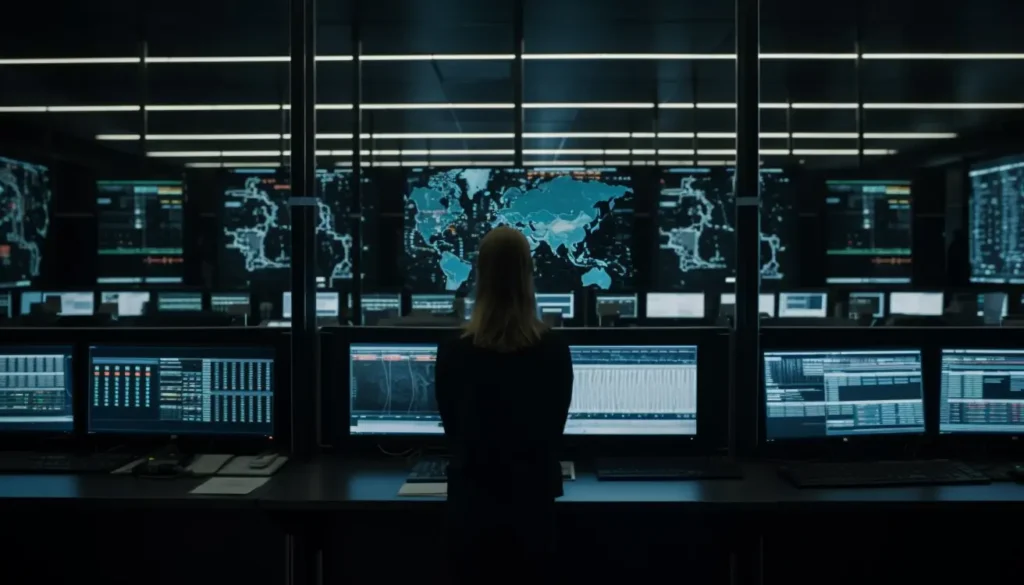
1. Understanding the Purpose of a Command Center
Before setting up a
command centers, define its core function. A well-designed
command centers can serve various purposes, including:
- Security Monitoring: Surveillance cameras, access control, and threat detection.
- Network Operations: Managing IT infrastructure, cybersecurity, and data centers.
- Emergency Response: Coordinating disaster response and crisis management.
- Corporate Operations: Managing multiple departments and business processes.
The more specific your
command center goals, the better the design and technology selection.
2. Choosing the Right Location
A
command centers needs a
secure, centralized, and accessible location. Factors to consider:
- Space & Layout: Sufficient room for operators, equipment, and displays.
- Connectivity: Reliable internet, power backup, and redundant systems.
- Ergonomics: Comfortable workstations, optimal lighting, and soundproofing.
A well-planned
command center ensures efficiency and reduces operational risks.
3. Essential Technology for a Command Centers
The backbone of any
command center is its technology. The must-have components include:
- Video Walls & Displays: High-resolution screens for real-time data visualization.
- Workstations: Ergonomic desks equipped with multiple monitors.
- Integrated Software: Command and control systems, AI-powered analytics.
- Communication Tools: VoIP, two-way radios, and emergency alert systems.
- Security & Access Control: Biometric entry, CCTV, and cybersecurity protocols.
Technology integration ensures a seamless and fully functional
command center.
4. Staffing and Training
A high-tech
command centers requires a skilled team to operate it efficiently. Roles may include:
- Command Center Operators: Monitor systems and respond to alerts.
- IT Specialists: Maintain software, servers, and cybersecurity.
- Security Personnel: Handle access control and surveillance.
- Crisis Managers: Oversee operations during emergencies.
Regular training ensures the
command centers team remains prepared for all situations.
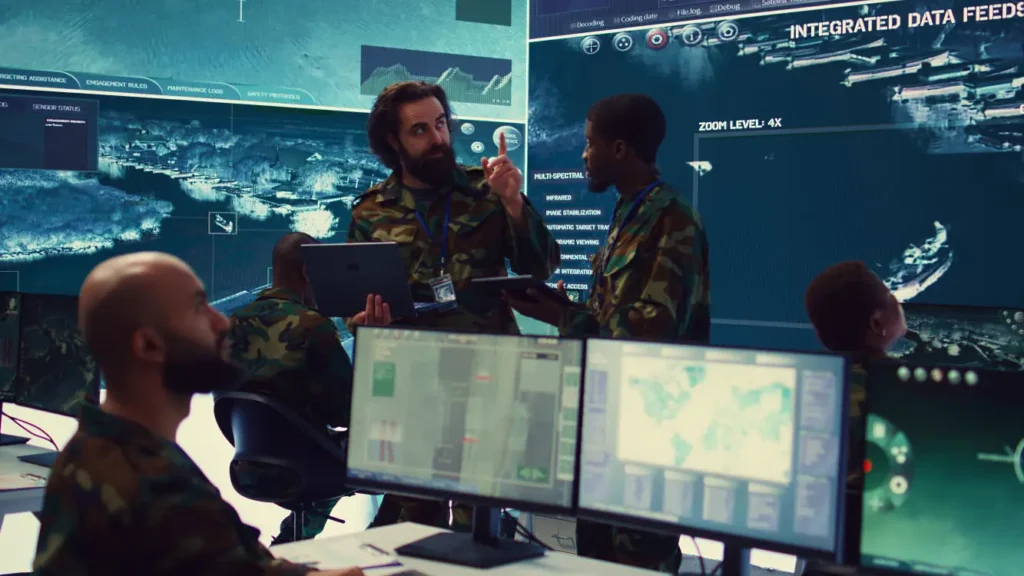 5. Command Centers Design & Layout
5. Command Centers Design & Layout
A
command centers should be designed for
maximum efficiency and
operator comfort. Key design elements include:
- Open Workspaces: Enhance team collaboration and situational awareness.
- Ergonomic Furniture: Adjustable desks and chairs for 24/7 operations.
- Cable Management: Organized wiring for easy maintenance and safety.
- Lighting & Acoustics: Reduce eye strain and minimize noise distractions.
Proper design improves productivity and enhances focus within the
command center.
6. Future Trends in Command Center Technology (2025 & Beyond)
As technology evolves, modern
command centers are becoming
smarter and more connected. Key trends include:
- Artificial Intelligence (AI): Automating alerts, predictions, and response systems.
- Cloud-Based Solutions: Remote access and data storage for enhanced mobility.
- Augmented Reality (AR) & Virtual Reality (VR): Improving training simulations.
- 5G Connectivity: Faster, real-time data processing for seamless operations.
By embracing these trends, organizations can future-proof their
command center.
7. Final Checklist for Setting Up a Command Center
- Define the purpose and objectives of the command center.
- Select a strategic location with secure infrastructure.
- Invest in high-tech displays, software, and communication tools.
- Hire and train a qualified command centers team.
- Optimize the workspace with ergonomic design principles.
- Implement command centers best practices and automation.
A well-designed
command center is a game-changer for any organization.
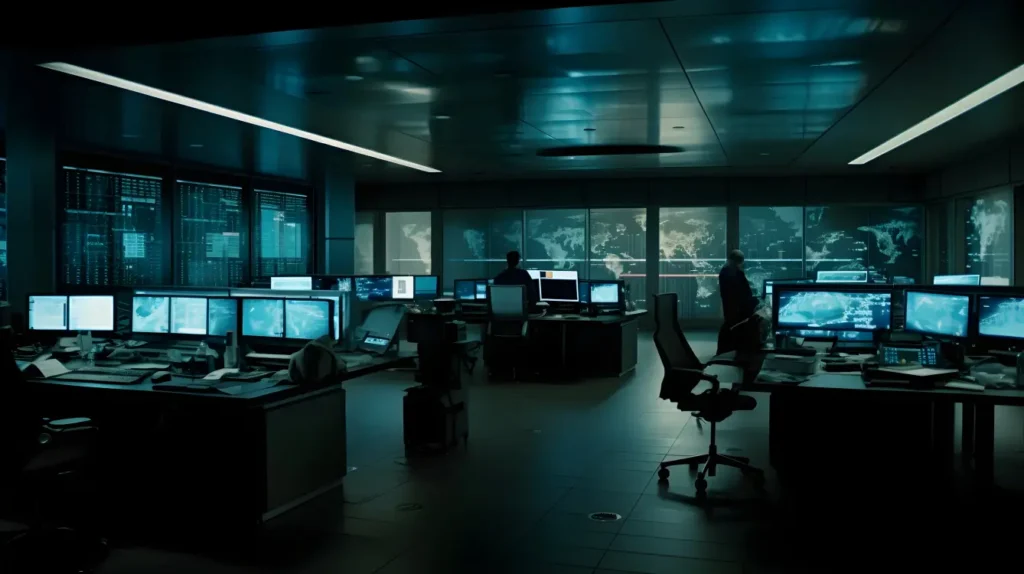
Conclusion
Setting up a
command centers in 2025 requires
cutting-edge technology, strategic planning, and a skilled team. Whether for security, IT, or operations, a
command center enhances
efficiency, real-time decision-making, and overall performance.
Additionally, a successful
command center is not just about technology—it also requires
well-trained personnel, an ergonomic layout, and proactive management to ensure smooth operations. Investing in regular
training, automation, and cybersecurity measures will help maintain efficiency and adaptability as technology continues to evolve.
By following this
ultimate guide, your organization can build a
powerful, future-ready command center that meets the dynamic demands of
modern business, security, and IT operations.
 5. Command Centers Design & Layout
5. Command Centers Design & Layout